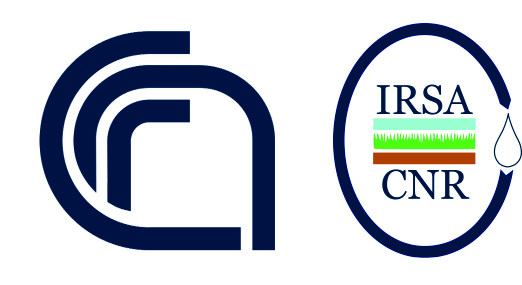| Title | Demographic cost and mechanisms of adaptation to environmental stress in resurrected Daphnia |
| Abstract | A characteristic feature of the Daphnia (Crustacea: Cladocera) life cycle are the so-called ephippia, which are fertilised eggs that need to undergo diapause. When they are shed by the female, they sink to the lake bottom, where they may become embedded in the sediment and may remain viable for decades. Extracting and hatching ephippia in the laboratory and subjecting resurrected lineages to conditions representative of historic lake environments allows retrospective investigation of life-history responses to environmental change. Here we reanalyse data from such a resurrection experiment. Contemporary and past lineages of Daphnia galeata Sars 1863 were obtained from Lake Orta (Italy), a deep, subalpine lake with a well-documented history of industrial copper pollution. Experimental Daphnia were subjected to three copper treatments representative of two levels of historic as well as to current (i.e., unpolluted) lake conditions, and life-table data were collected. With these data at hand, we first estimated vital rates (survival, maturation, and reproduction) and used these rates to project the asymptotic population growth rates (?) for each population-by-treatment combination. Next, we performed a retrospective decomposition to estimate the contributions of the vital rates to observed differences in ?. Finally, we used elasticity analysis to explore the functional relationship between ? and each of the vital rates. We found that survival rates were only compromised at elevated copper levels. Moreover, past, resurrected Daphnia had a higher ? at low copper concentrations compared to unpolluted conditions, but a lower ? when exposed to high copper levels. Contemporary Daphnia, on the other hand, only reproduced successfully in unpolluted water. Under these conditions, however, they had a higher population growth rate than the past Daphnia, suggesting a cost of copper tolerance in the latter. This cost was mainly due to a lower probability of reproduction and reduced fecundity, whereas survival rates contributed only little to differences in ?. Finally, we found higher elasticity values of ? to survival than to reproductive rates. This suggests that any change in the environment that will affect survival rather than reproductive parameters will have a much larger impact on Lake Orta's current Daphnia population. |
| Source | Journal of limnology (Testo stamp.) 75 (2S), pp. 30–35 |
| Keywords | CladoceraCopper pollutionLake OrtaLife-history responsesPerturbation analysesPopulation ecology |
| Journal | Journal of limnology (Testo stamp.) |
| Editor | Istituto per lo Studio degli Ecosistemi., Verbania Pallanza, Italia |
| Year | 2016 |
| Type | Articolo in rivista |
| DOI | 10.4081/jlimnol.2016.1292 |
| Authors | Sommer, Stefan; Piscia, Roberta; Manca, Marina M.; Fontaneto, Diego; Ozgul, Arpat |
| Text | 354839 2016 10.4081/jlimnol.2016.1292 Scopus 2 s2.0 84964799963 Cladocera Copper pollution Lake Orta Life history responses Perturbation analyses Population ecology Demographic cost and mechanisms of adaptation to environmental stress in resurrected Daphnia Sommer, Stefan; Piscia, Roberta; Manca, Marina M.; Fontaneto, Diego; Ozgul, Arpat Universitat Zurich; Consiglio Nazionale delle Ricerche A characteristic feature of the Daphnia Crustacea Cladocera life cycle are the so called ephippia, which are fertilised eggs that need to undergo diapause. When they are shed by the female, they sink to the lake bottom, where they may become embedded in the sediment and may remain viable for decades. Extracting and hatching ephippia in the laboratory and subjecting resurrected lineages to conditions representative of historic lake environments allows retrospective investigation of life history responses to environmental change. Here we reanalyse data from such a resurrection experiment. Contemporary and past lineages of Daphnia galeata Sars 1863 were obtained from Lake Orta Italy , a deep, subalpine lake with a well documented history of industrial copper pollution. Experimental Daphnia were subjected to three copper treatments representative of two levels of historic as well as to current i.e., unpolluted lake conditions, and life table data were collected. With these data at hand, we first estimated vital rates survival, maturation, and reproduction and used these rates to project the asymptotic population growth rates for each population by treatment combination. Next, we performed a retrospective decomposition to estimate the contributions of the vital rates to observed differences in . Finally, we used elasticity analysis to explore the functional relationship between and each of the vital rates. We found that survival rates were only compromised at elevated copper levels. Moreover, past, resurrected Daphnia had a higher at low copper concentrations compared to unpolluted conditions, but a lower when exposed to high copper levels. Contemporary Daphnia, on the other hand, only reproduced successfully in unpolluted water. Under these conditions, however, they had a higher population growth rate than the past Daphnia, suggesting a cost of copper tolerance in the latter. This cost was mainly due to a lower probability of reproduction and reduced fecundity, whereas survival rates contributed only little to differences in . Finally, we found higher elasticity values of to survival than to reproductive rates. This suggests that any change in the environment that will affect survival rather than reproductive parameters will have a much larger impact on Lake Orta s current Daphnia population. 75 Published version http //www.scopus.com/record/display.url eid=2 s2.0 84964799963 origin=inward daphnia orta 2016_JLimnol_Sommer_et_al_daphnia.pdf Articolo in rivista Istituto per lo Studio degli Ecosistemi. 1129 5767 Journal of limnology Testo stamp. Journal of limnology Testo stamp. J. limnol. Testo stamp. Journal of limnology. Testo stamp. roberta.piscia PISCIA ROBERTA diego.fontaneto FONTANETO DIEGO marinamarcella.manca MANCA MARINA MARCELLA |
